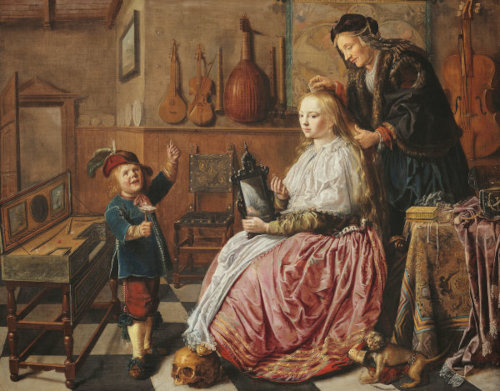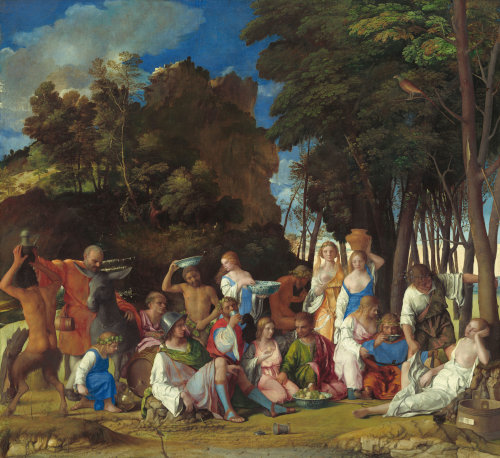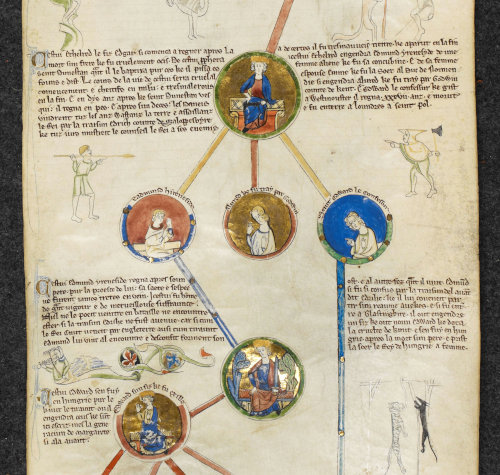IRP Showcase: Super-sized images
In this article we want to show off the IRP image viewer and explore some of its capabilities. First we need to answer one very important question - what is a super-sized image? There is no official definition, and such a definition would have to change regularly as technology changes. Large images from twenty years ago are now considered to be only slightly bigger than thumbnails! It is worth nothing that many organisations classify their images by the pixel size of the image, making some arbitrary decision about what medium and large mean. Some talk about resolution, but without regard to the original object. However, the resolution of a 1024 pixel wide image for an object of 1mm wide, is quite different from 1024px image of an object 1m wide! Whenever we talk about resolution it really needs to be in terms of pixels/cm of the original source. For this article, we aren't looking at resolution per se but image size. Any image 50 megapixels and over will be considered to be super-sized.
Digital imaging technology is advancing rapidly. As of March 2021, mobile phones support 10-40 megapixel cameras and digital SLRs offer 30-50 megapixels. Although the demands of iconography research are significant, a sharp close-up at a lower resolution can yield as much information as a wider image at higher resolution. However, it is nice to be able to view an entire work and then just keep zooming in on the details.
The IRP supports both multiple images for a source and deep-zooming to efficiently view an image of any size. The images are stored as pyramid tiled TIFFs (we can use BigTIFF as well). TIFF image files can be up to 4 gigabytes in size, and BigTIFF up to 18 exabytes. Currently the largest image in the BSIP database has a file size of 1.1GB and that supports an image of 965 megapixels (just under 1 gigapixel!). A standard TIFF file can therefore support an image of around 3.5-4 gigapixels depending on the compression achieved. We haven't worked out how big a BigTIFF image can support, suffice to say, huge!
In the BSIP database, 10% of the images are over 20 megapixels, and only 1% are over 50 megapixels. This highlights how digital image availability is lacking behind capabilities by quite a long way. The good news is that the future will see more higher resolution images yielding increasing levels of details. The BSIP IRP has been designed and engineered for the future - we are ready and waiting and no image is too big!
Enough tech chat! Let's take a look at some great images!
Below are three sources that have images that show off the IRP Source Image Viewer's deep-zooming capabilities. After navigating to the sources we recommend turning off the pins and pulses and placing the image viewer panel itself in full screen mode for maximum enjoyment!
bsip561.1
35152 × 27452 px
965 megapixels
Molenaer, Jan Miense, Allegory of Vanity, 1633, oil painting, canvas/oil paint, 102 × 127 cm, Toledo Museum of Art, Toledo, 1975.21.
At just under 1 gigapixel this is currently the largest image in the database. The more you zoom, the more the details come out! The details on the instrument on the top right are simply beautiful!
(This image has restricted rights, you will need to be signed in to view the zooming image.)
bsip150.1
26900 × 24642 px
662.9 megapixels
Bellini, Giovanni, Dossi, Dosso, Titian, Feast of the Gods, 1514, oil painting, canvas/oil paint, 170 × 188 cm, National Gallery of Art, Washington, 1942.9.1.
This image is currently the second biggest image in the database. The levels of zoom are superb, with great detail of the brush strokes visible. Zooming in on the instrument gives us great detail of the string coniguration, and the small details such as the signature on the label on the bucket, what looks to be a kingfisher, and the hip barrel(!) are a joy to behold!
(This image may be deep-zoomed by everyone.)
bsip786.3
2500 × 36447 px
91.2 megapixels
Genealogical Chronicle of the English Kings, c. 1275-1299, illumination, parchment, 394 × 24 cm, British Library, London, Royal MS 14 B V 'Genealogical Chronicle of the English Kings'.
The original scroll is just under 4 metres long! It is too long to show even a decent sized reduction, so the image here is just a small section from the middle! Although it is not the biggest image in megapixels, nor the highest resolution, it does have the longest side (in pixels) of any image in the database.
The full scroll consists of 6 images that we have stitched back together to re-create the full scroll experience. Unfortunately the British Library imaging was not performed with re-stitching in mind, so there are errors in registration between the images - but this doesn't detract from the pleasure of being able to read the scroll as it was intended - as a single continuous document, allowing us to see the proper context of the depictions. This is just great!
(This image may be deep-zoomed by everyone.)
Cite this article:
Pearce, Barry. Bowed Strings Iconography Project, IRP Showcase: Super-sized images. <https://bsip.org.uk/articles/series-showcase/supersized-images>


